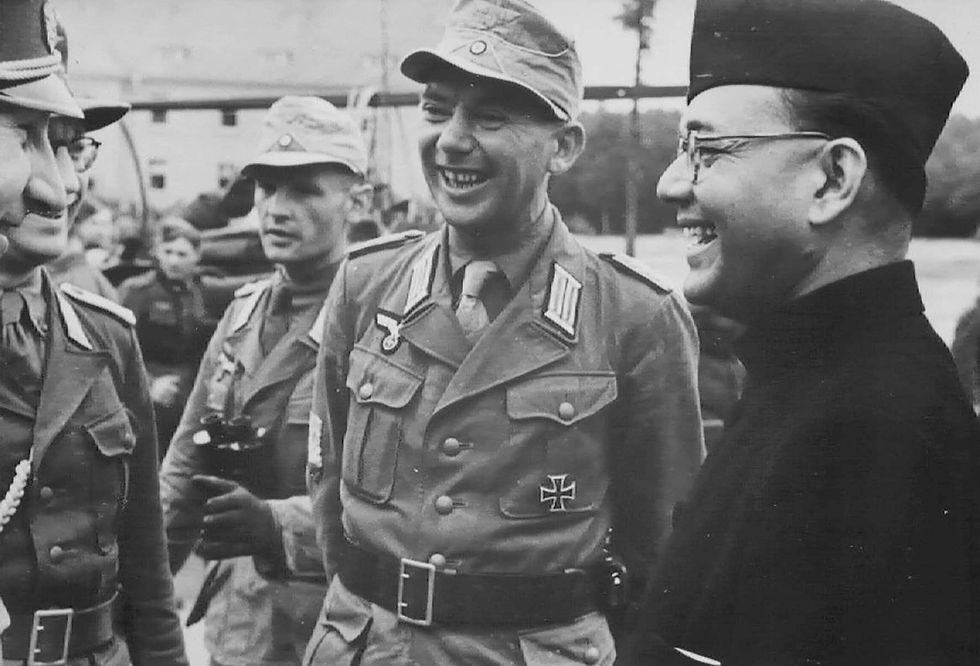The Valley That Killed an Empire
- Shoumojit Banerjee

- Jun 7
- 4 min read
Our series on asymmetric warfare revisits pivotal moments in modern history when underdogs rewrote the rules of war and forced superpowers to reckon with new realities.
PART - 1
A remote valley in Vietnam became the graveyard of French colonial ambition and a textbook case of asymmetric warfare for insurgents across the world.

When the guns fell silent in a remote valley in north-western Vietnam on May 7, 1954, it was more than the conclusion of a battle; it marked the death knell of the French colonial empire in Indochina and the dawn of a new form of modern combat. What happened at Dien Bien Phu, where the French suffered a humiliating defeat at the hands of Vietnamese insurgents, was one of the earliest and clearest examples of asymmetric warfare reshaping the global order in modern times.
Much like Ukraine’s Operation Spider’s Web against Russia, a masterstroke in using small, remote-controlled first-person view (FPV) drones to gut a superior adversary’s air power, General Vo Nguyen Giap’s siege of Dien Bien Phu exposed the soft underbelly of conventional military doctrine.
It would become an iconic instance when a technically inferior but ideologically fervent force, fighting on its own terrain and bending the rules of classical warfare, bested a better-equipped but strategically complacent colonial army. The echoes of that conflict still resound in battlefields from Afghanistan to Gaza.
Fortress Folly
The complacent French believed they were applying lessons from Korea. Inspired by US General Matthew Ridgway’s success against Chinese forces at Chipyong-ni in 1951, French commanders sought to lure the Viet Minh into a conventional battle, believing superior firepower would guarantee victory. Thus was born the idea of a ‘hedgehog’ defence, which involves an air-supplied base in a remote area surrounded by fortified positions.
Dien Bien Phu, an old Japanese airstrip nestled in a steep valley, near the Laotian border, was chosen for its supposed isolation. Beginning in November 1953, French troops parachuted in to establish a fortified base with artillery, bunkers and airfields. The idea was to block Viet Minh incursions into Laos and to force Giap to commit to a frontal, conventional assault. The French, who viewed the Viet Minh as little more than jungle-bound guerillas.
It was to prove a fatal miscalculation. As historian Fredrik Logevall, in his Pulitzer Prize-winning masterwork ‘Embers of War’ (2012) demonstrates, the French were undone not only by physical terrain but by imperial hubris as well. They assumed that the Viet Minh, veterans of jungle skirmishes and guerrilla raids, lacked the capacity for large-scale operations. Giap shattered that illusion as over the next few months, 50,000 Viet Minh troops, supported by hundreds of thousands of porters dragged artillery pieces up jungle-covered hills and dug an intricate network of trenches around the French positions. Once in position, Giap’s guns pounded the airstrip into rubble, isolating the garrison from reinforcements and resupply. It was a logistical feat of Napoleonic ambition, except performed by peasants in sandals.
Giap’s genius lay not in matching the French gun for gun, but in understanding their limitations. Giap’s men dug trenches right up to the wire, making every inch of French territory vulnerable to sudden attacks. By using the terrain as both shield and weapon, the Viet Minh turned French advantages into liabilities. One could say that Giapweaponised the logistics.
Like Ukraine’s drones flying deep into Russian territory, Viet Minh gunners didn’t need to match French range or rate of fire. They only needed to make the sky dangerous and the ground untenable. In that sense, Dien Bien Phu was an early lesson in how to degrade a stronger power’s will to fight without matching its arsenal.
France’s garrison of 13,000 elite troops including Foreign Legionnaires, Moroccan infantry and Thai auxiliaries was demoralised from the outset. The isolation of the valley, combined with relentless shelling and the gradual realisation that reinforcements weren’t coming, sapped morale.
By early May, with all airfields destroyed and their wounded piling up, General Christian de Castries was forced to surrender. The French suffered over 10,000 casualties. The Viet Minh had lost more men (perhaps 20,000) but had won the war.
It was perhaps the most ‘elegant’ demonstration of asymmetrical warfare. Giap did not need to destroy every French soldier. He needed only to demonstrate that France could not win. And once that idea took hold on the battlefield and in the minds of politicians in Paris, the rest followed.
Global Aftershocks
Dien Bien Phu shattered French confidence in empire. Within months, France sued for peace in Geneva. Vietnam was partitioned, and the seeds of future American involvement were sown. But the reverberations extended well beyond Southeast Asia.
The Viet Minh’s triumph was proof that colonialism was not destiny. In 1956, Algeria’s FLN launched its own insurgency, consciously borrowing Giap’s tactics of hit-and-run raids, psychological warfare and political indoctrination. In 1960, Cuban revolutionaries cited Dien Bien Phu as evidence that a smaller force could outmanoeuvre a superior one, so long as it had legitimacy and terrain on its side.
America’s disastrous misadventure in Vietnam was, in part, rooted in a misreading of Dien Bien Phu. American planners took the French defeat as a lesson in logistics. They missed the strategic message, that overwhelming firepower cannot substitute for political credibility. From Hamas’s tunnel networks under Gaza to Ukraine’s use of AI-assisted targeting software, the principles of Dien Bien Phu are alive and well today even though their mediums may have changed.
(Tomorrow, we revisit the brutal Soviet-Afghan War [1979–89] when mujahideen fighters turned terrain, religion and Stinger missiles into tools that bled a superpower.)





Comments